Lord Ganesha is worshipped at the beginning of any auspicious work or puja. He is considered the remover of all kinds of obstacles. And without his blessings, no task can be accomplished. Thus, he is also known as the Vighna Vinashaka. Lord Ganesha's intelligence was glorified all the more when he walked three times around his parents. It was for the competition carried out by his parents, of taking three rounds of the universe, with his brother Kartikeya. Later he explained that his parents Lord Shiva and Goddess Parvati symbolise the world to him so he paced around them.
In fact, because of Lord Ganesha's wisdom and strong listening power, he was chosen by Veda Vyasa to write Mahabharata. There is one interesting story also attached to it; while he was writing, his stylus or pen broke and in order to continue writing without any interruption he broke his tusk and started writing Mahabharata using the broken tusk. All of us have heard Lord Ganesha’s birth story and how he got an elephant head. The article will help you to know about 32 forms of Lord Ganesha.
Lord Ganesha body parts and their meanings

Large Ears are one of his most distinguished features which symbolises attentiveness and good listening qualities. It also implies that Lord Ganesha compassionately listens to all his devotees' prayers.
Big Head represents intellect, wisdom and understanding in life.
While Small Eyes signifies concentration, seeing beyond what you see, and single-minded focus in every action.
And Small Mouth tells us one should speak less and conserve that energy in doing something productive
While One Tusk means to retain all good in life and we must discard bad which maligns our soul.
Trunk signifies high Efficiency in all tasks and adaptability to any situation.
And Large Stomach implies one should peacefully digest or accept every situation in life irrespective of the fact whether it is good or bad.
The most important element of Ganesha is his vehicle Mooshaka or Mouse which symbolises Desire, greed and cravings. It signifies that one should not let desires or cravings overcome their life. Instead, ride the desire and keep it totally under your control.
There are 32 Forms of Lord Ganesha
The Ganesha Purana has magnificently articled the 32 forms of Lord Ganesha. Each form has specific powers and features. The first 16 forms of the 32 forms of Ganesha are known as“Shodasa Ganapati” and the rest are known as “Ekavimsathi”. And amongst them, Mahaganapati is most widely worshipped.
- Bala Ganesha: The first form of the 32 forms of Lord Ganesha. This is the child form known as Bala Ganesha and is believed to represent the fertility of the earth. He is bright golden colour like the rising sun with four hands holding – Mango, Jackfruit, Banana and Sugarcane the produce of the Earth. And in his trunk holds his favourite sweet the modaka.
- Taruna Ganapati: An adolescent form of Ganesha, shining bright red like the midday sun signifying youthful energy. He is ashtabhuja dhari or with eight hands. In Taruna Ganesha's form, he bestows health, fulfilment, happiness and prosperity. An exuberant form of Lord Ganesha representing one of the elements air or Vayu.
- Bhakti Ganapati: In this form, Lord Ganesha shines like a Sharad Purnima or Autumn full moon. His kindness and compassion to his devotees reflect in this form that's why he himself is shown as a devotee or in bhakti form. The four arms hold a mango, a banana, a coconut and a sweet or a kheer. He represents the water element. And also helps his worshippers to be in control of their temper, and stay blissful in life.
- Veera Ganapati: He has been depicted as a "Valiant Warrior” in Veera Ganesha form, with 16 arms flared up holding weapons in each hand. Thus symbolising fearlessness, courage and Valor. Represents Agni or fires element and helps those who worship this form to win over all the challenges in life.
- Shakti Ganapati: He is portrayed as four-armed or Chathurbhuj Ganpati. One of his consorts GoddessShakti sits on his left side leg. This form is more worshipped among Tantriks. Shakti Ganapati represents the element space or Akash. It is believed worshipping this form enhances concentration and provides success in our goals. This form is regarded as the protector of households and is believed to bring peace and harmony to family life.
- Dvija Ganapati: This form of Ganesha looks similar to Lord Brahma. He is Four-headed and has four arms. Dvija Ganapati's colour is like a moon. The word “Dvija” means born twice, first when the birth takes place and second at the time of wearing the sacred thread (Janeu which Brahmins wear). That’s why Dvija is used to refer to Brahmins. It is believed that worshipping Ganesha in Dvija form brings goodwill and fame in personal and professional life.
- Siddhi Ganapati: He is also known as ‘Pingala Ganpati’ because of his shiny golden-yellow colour. This 7th form of 32 forms of Ganesha is believed to have attained Ashta or 8 Maha Siddhis. And he blesses his devotees to succeed in all endeavours in life.
- Ucchhishta Ganesha: He is blue in complexion and portrayed with six arms. He sits with his consort Goddess Shakti on his left leg. He is worshipped more in the Tantrik form of puja. As per Vedic astrology, he is connected to ‘Krittika Nakshatra’. This form of Ganesha is also believed to strengthen the relationship between life partners.
- Vighna Ganesha: Vighna Ganapati similar to Lord Vishnu holds Shankha or conch and Chakra or discus, in two of his hands amongst eight arms. He is golden yellow in colour and is associated with Rohini Nakshatra. It is believed that this form is particularly significant to remove all obstacles and negativity from devotees' life.
- Kshipra Ganapati: In this form, you can see him in red colour with four arms. Amongst other things, he can be seen holding a sprig of Kalpavirksha a wish-fulfilling tree. Also holds a tiny pot of precious jewels, which is considered a symbol of prosperity for his followers. Thus, he is believed to fulfil all the wishes of his worshippers and grant them wisdom and wealth.
- Heramba Ganapati: This form of Ganpati has been illustrated with a Lion as his vehicle. Heramba Ganesha is a rare form, as he possesses five heads and ten hands. In Sanskrit the ‘Heramba’ implies ‘weakness’ or ‘helplessness’ and ‘Ramba’ means ‘protection.’ Thus, He-Ramba Ganapati is the ‘protector of the weak and the helpless.
- Lakshmi Ganapati: In this form, Ganesha is seen with his consorts Goddess Siddhi (Achievement) and Goddess Budhi (Wisdom) sitting on his legs. He has 8 arms and is white in colour. Prayers to Lakshmi Ganesha bestows devotees with lots of wealth, intelligence, prosperity and a blissful life.
- Maha Ganapati: Ganesha is portrayed with three eyes and a crescent moon on his forehead just like Lord Shiva. In this form as well one of his consort can be seen sitting on his left leg. He is red in colour and depicted with ten arms. In one of his hand, he can be seen holding his own broken tusk. Maha Ganapati the 13th form of 32 forms of Lord Ganesha, is one of the important and powerful forms. His sincere devotees achieve success and praise in all their accomplishments.
- Vijaya Ganapati: This form of Ganesha is four-armed or Chathurbhuj is of red colour and rides his vehicle mushaka or mouse. The mouse size here is big and looks like it is galloping fast with Ganesha on its back. Vijaya Ganapati has four hands and is regarded as the God of achievement and success.
- Nritya Ganapati: He is the exuberant form of Ganpati, dancing happily under the Kalpavriksha tree. Ntritya Ganapati is four-armed and golden in colour. He represents the happy and delightful form of the Lord Ganesha. It is believed that Nritya Ganapati gives proficiency to his devotees in the artistic field. They gain success and fame, especially the dancers.
- Urdhva Ganapati: This is again considered a Tantrik form of Ganpati. He is Golden in colour with eight arms and his consort Goddess shakti is sitting on his left leg. Those who worship this form are able to overcome difficulties and enhance their inner strength.
- Ekakshara Ganapati: ‘Eka’ stands for one and ‘Akshara’ means ‘the letter’. Thus Eka Akshara indicates a single syllable representing the Beejakshara or seed letter called ‘Gam,’ In this form, represents the universal sound, ‘Om.’ He is seen sitting in a Padmasana posture (lotus pose) and is riding Mushaka the mouse. He is red in complexion and like Lord Shiva, he has three eyes and a crescent moon on his crown.
- Varada Ganapati: He is known to be a boon-giver to his devotees. He has a third eye of wisdom, four arms and a Crescent moon on his crown. His consort Goddess shakti sits on his left side leg. The shakti can be seen holding a lotus and the flag. This Ganapati is red in complexion and is upheld as a symbol of generosity.
- Tryakshara Ganapati: This form connotes the three-letter word ‘A-U-M’ Om' sound. Tryakshara Ganapati has a golden complexion and there is a third eye on his forehead. Portrayed with four hands and big floppy ears. His worshippers who concentrate on this form attain spiritual knowledge and head to the self-realization journey.
- Kshipra Prasada Ganapati: In this form, he is seen sitting on the sacred Kusha grass. In his appearance, he is depicted with six arms and a crimson-red complexion. His distinctly big belly in this form represents the Universe. Kshipra Prasada Ganapati is believed to reward his worshipper far more easily.
- Haridra Ganapati: This form is considered to be made up of turmeric that's how he appears to be bright yellow in colour. He has four hands and in one of his upper hands, he holds a noose and in another an elephant Goad. It is believed that Ganesha holds his devotees close to him with the noose and stimulates them to move ahead with the Goad.
- Ekadanta Ganapati: Ekadanta means “single-tusked” Lord Ganapati. In this form, he is blue in colour and has a much larger belly symbolising the universe exists inside him. Amongst four of his arms in one hand he holds an axe, which is believed to cut the bond of ignorance.
- Srishti Ganapati: As the name suggests he is regarded as the creator of the Universe. Portrayed in crimson red colour and has four hands. He rides his vehicle mushaka or mouse. It is believed that Srishti Ganesha help his devotees to attain the power of judgement or discrimination.
- Uddanda Ganapati: In this form, Lord Ganesha has twelve arms and Goddess Shakti has been shown sitting on his left leg. He is an angry and aggressive form of Ganpati. In this 24th form of 32 forms of Lord Ganesha, he is regarded as the merciless persecutor of evil and upholds Dharma or righteousness.
- Rinamochana Ganapati: This form of Ganesha enables his devotees to liberate themselves from the Karmic debts of this world. He is white in colour that’s why appears to be a crystal image and has four arms.
- Dhundhi Ganapati: He can be seen holding rudraksha beads and it is said that Lord Shiva resides in them. This form too shows or empowers the spiritual knowledge of the devotees. It leads them to the path of moksha or liberation. In this appearance, he is portrayed as red in colour and has four hands. The Ratna Kumbha or the pot of jewels, which he holds represents the supreme consciousness leading to the spiritual path.
- Dvimukha Ganapati: In this form, Lord Ganesha is portrayed with two faces which stands for his ability to look at the inner and outer aspects of the universe. As the one who can see in all directions. He is greenish-blue in colour, with four hands and wears a bright gem-decorated crown on his head. It is said that in this form he bestows protection to his devotees against all evil forces.
- Trimukha Ganapati: This 28th form of the 32 forms of Lord Ganesha is one of the most revered Ganesha forms. He is three-faced, Sits on a lotus flower and with six hands. Trimukha Ganapati looks after the well-being of the devotees and their families. He is red in complexion, with a pot filled with nectar in his left hand.
- Simha Ganapati: As a Simha Ganesha, he is portrayed with eight arms and the face of a Lion or Simha. He is believed to boast the fearlessness and core strength of the characteristics in his worshippers. In some places, he is also shown as riding a lion or holding a lion in one of his hands.
- Yoga Ganapati: In this form, he is in deep meditation with folded knees in a meditation posture. He shines bright like a rising sun. Yoga Ganesha is connected with the base chakra called the Mooladhara chakra. That is why it is believed that worshipping this form brings mental health, physical health, and progress in life.
- Durga Ganapati: This form of Ganesha has powers similar to Goddess Durga. He has the undefeatable powers to gain victory over evil. He has eight arms and glows like a bar of gold. The worshippers of this form are able to remove all the obstacles and come out victorious in every aspect of life.
- Sankatahara Ganapati: This is the last of the 32 forms of Ganesha. Sankathara means banishing all the problems of life. In this form, he eliminates all the obstacles and sorrows in the life of his devotees. He can be seen in a radiant red colour with four arms. And his consort Goddess Shakti is sitting on his left leg.
Thus these are the 32 forms of Ganesha as per our Hindu scriptures. Each form has its own specific significance and purpose. As per the devotees' realisation and desire in life, these specific forms of Ganesha can be worshipped. Based on your problems and needs Askganesha can find out the form you need to focus or concentrate on, to accomplish your wishes or demolish all the obstacles in your life. Askganesha regularly carries Ganesh Sahasranam Puja for its clients.
















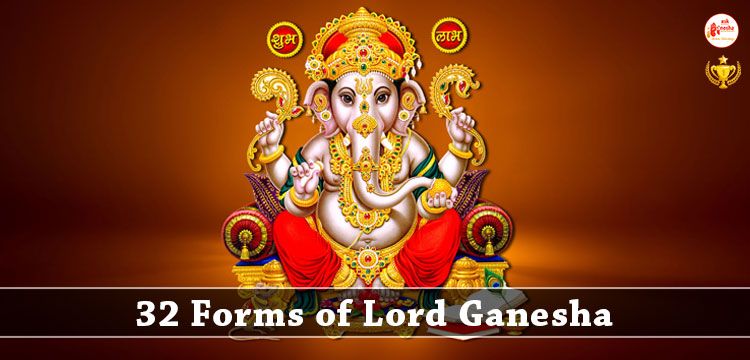
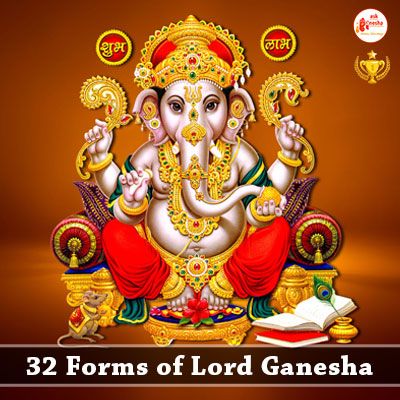
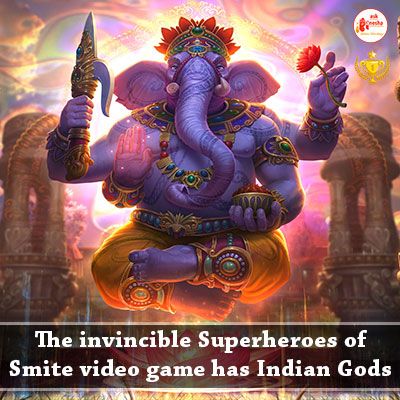
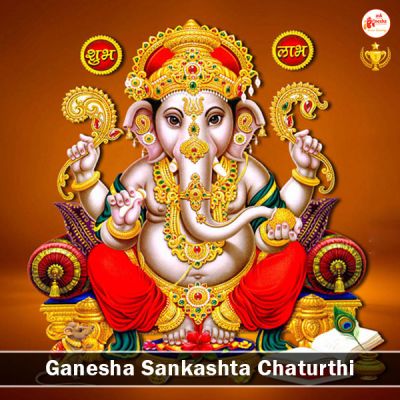
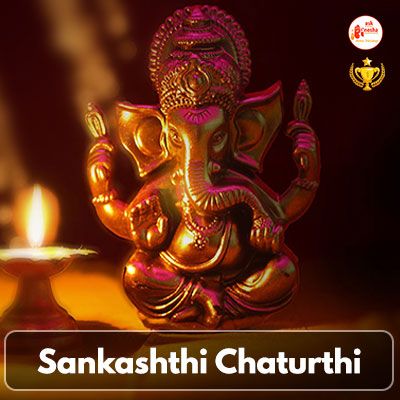
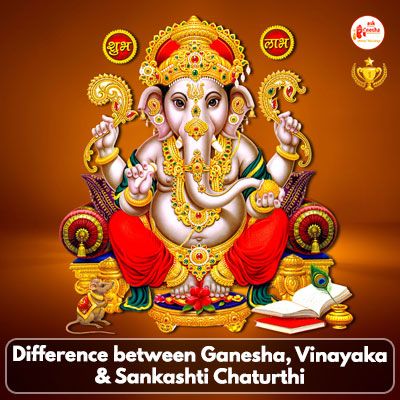

 Translate
Translate